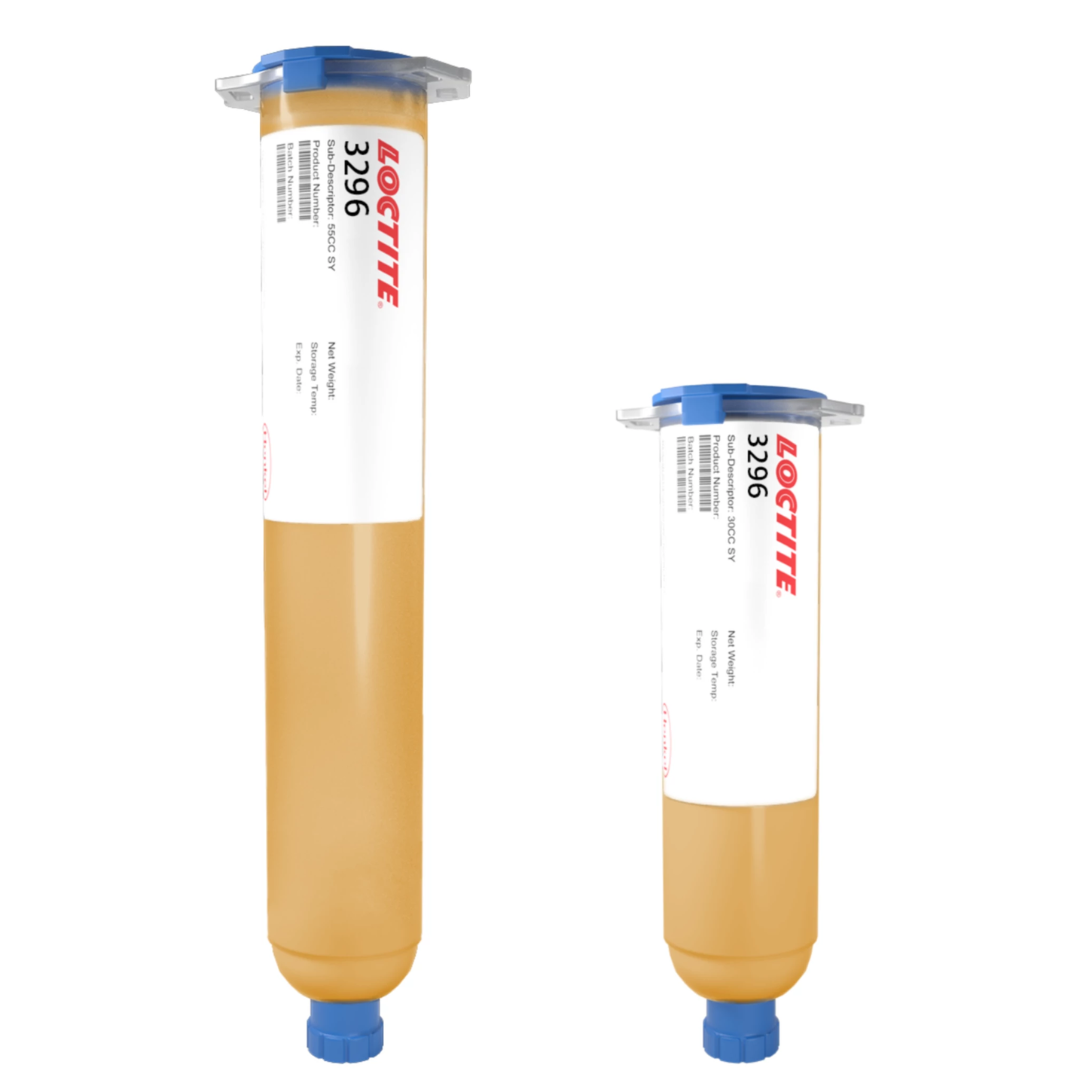LOCTITE 3296 | UV-curable Epoxy Adhesive
- Fast UV cure
- High Tg and low CTE
- Low shrinkage during & after cure
Product Description
LOCTITE® 3296 is a dual-cure adhesive specifically developed for Automotive ADAS Optical Modules, including critical bonding applications like lens barrel-to-housing and lens housing-to-circuit board assemblies. This advanced adhesive is engineered for high-performance environments where precise alignment and long-term stability are essential. With a fast UV cure that can achieve primary bonding in as little as 3 seconds under adequate UV exposure, LOCTITE® 3296 significantly speeds up production cycles, reducing downtime and increasing throughput. Its exceptional thermal stability is highlighted by a Glass Transition Temperature (Tg) of 189°C, making it ideal for components exposed to intense heat. Its low Coefficient of Thermal Expansion (CTE) of 22.1 ppm/°C (between 25-125°C) and minimal shrinkage of 0.3% ensure that it maintains a strong, reliable bond even in demanding thermal conditions, minimizing the risk of component stress or misalignment over time.
Mechanically, LOCTITE® 3296 provides robust support with a Shore D hardness of 94 and an E-Modulus of 10,900 MPa at 25°C, offering excellent stiffness and durability for critical assemblies. This makes it particularly suited for optical modules where precise bonding is crucial for long-term optical clarity and alignment. LOCTITE® 3296 is well-suited for automated production environments, exhibiting low-viscosity behavior that ensures smooth, consistent dispensing. It is also designed to work without SVHCs and antimony, aligning with industry demands for environmentally responsible manufacturing processes.
Technical Specifications
| General Properties | |
| Density (g) | 1.8 g/cm3 |
| Thermal Properties | |
| Glass Transition Temperature (Tg) Glass Transition Temperature (Tg) The glass transition temperature for organic adhesives is a temperature region where the polymers change from glassy and brittle to soft and rubbery. Increasing the temperature further continues the softening process as the viscosity drops too. Temperatures between the glass transition temperature and below the decomposition point of the adhesive are the best region for bonding. The glass-transition temperature Tg of a material characterizes the range of temperatures over which this glass transition occurs. | 189 °C |
| Physical Properties | |
| Viscosity Viscosity Viscosity is a measurement of a fluid’s resistance to flow. Viscosity is commonly measured in centiPoise (cP). One cP is defined as the viscosity of water and all other viscosities are derived from this base. MPa is another common unit with a 1:1 conversion to cP. A product like honey would have a much higher viscosity -around 10,000 cPs- compared to water. As a result, honey would flow much slower out of a tipped glass than water would. The viscosity of a material can be decreased with an increase in temperature in order to better suit an application | 33,700 mPa.s |
| Young's modulus | 10,900 MPa |
Additional Information
LOCTITE 3296 Additional Technical Specifications
| Property | Value | Unit |
| Shear thinning index | 4.3 | 1.5/15s-1 |
| Cure Shrinkage, Linear | 0.33 | % |
| Cure Depth (UV Only) | >3 | mm |
Conditioning
- Allow container to reach room temperature before use.
Thawing Directions
- 30/55cc: 1 hour
- 6oz: 2 hours
Required UV Cure
- Light Source and Condition: UV LED
- UV Wavelength: 365 nm
- Irradiance at Bond Line: 1,000 mW/cm2
- Recommended Time: 3 seconds
Recommended Heat Cure
- 30 minutes @120℃
- 60 minutes @100℃




